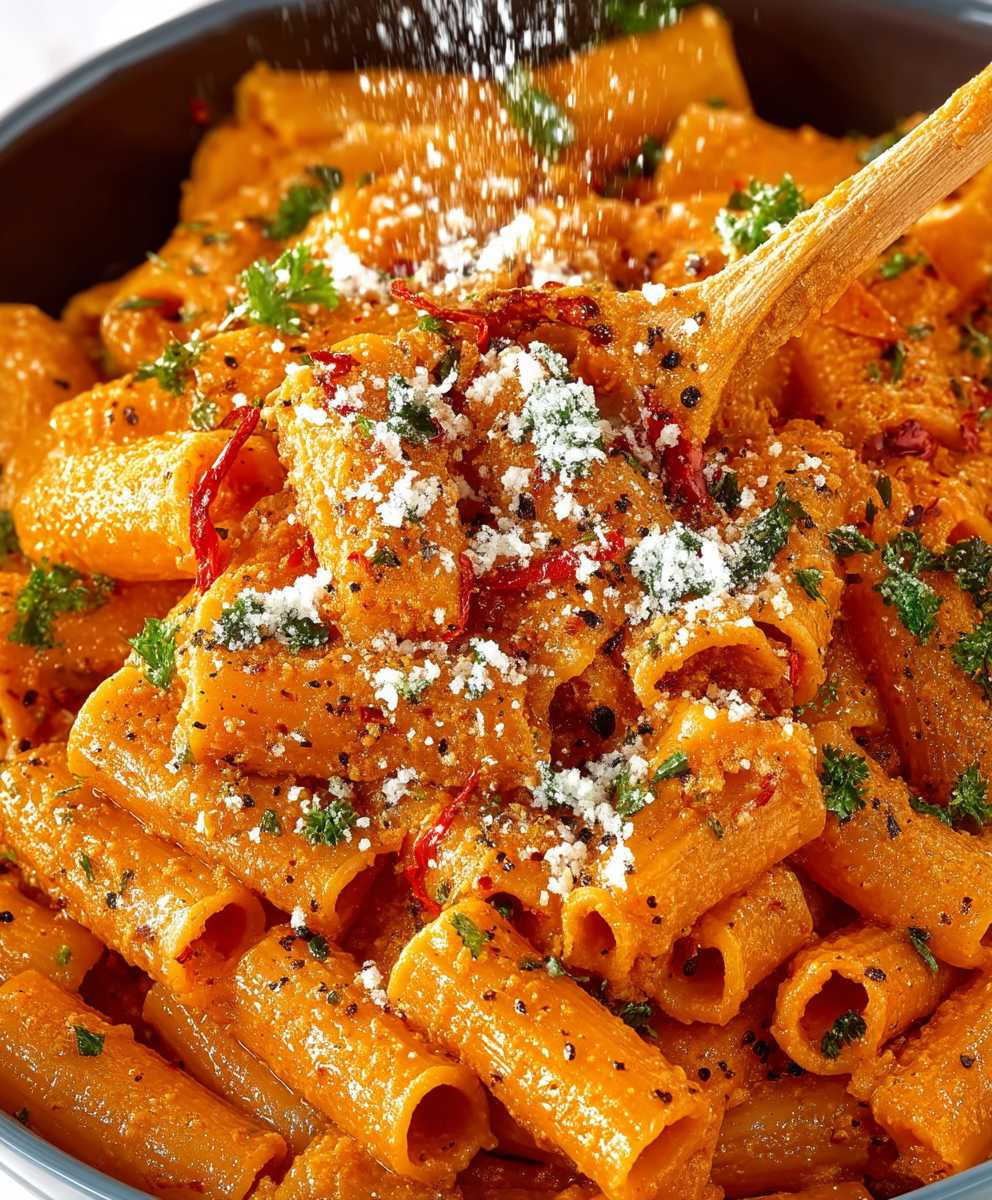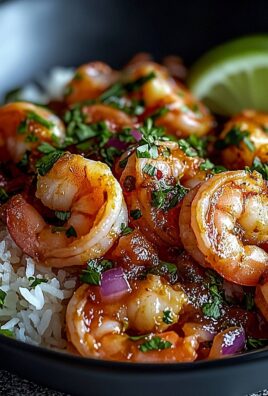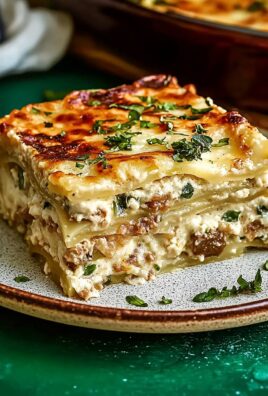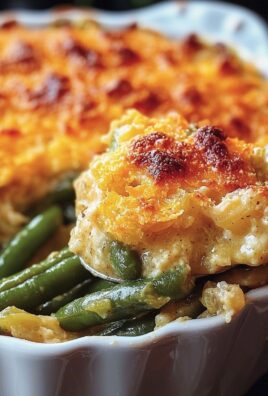Calabrian chili pasta: Prepare to ignite your taste buds with a dish that’s as vibrant and fiery as the sun-drenched region it hails from! Imagine twirling strands of perfectly cooked pasta, coated in a luscious, tomato-based sauce, punctuated by the unmistakable, slow-burning heat of Calabrian chilies. This isn’t just pasta; it’s an experience.
The story of Calabrian chilies is deeply intertwined with the history of Calabria, a region in Southern Italy known for its rugged landscapes and passionate culinary traditions. These chilies, often sun-dried and preserved in oil, have been a staple ingredient for generations, adding depth and complexity to countless dishes. They represent the heart and soul of Calabrian cooking, a testament to the resourcefulness and ingenuity of the local people.
But what makes Calabrian chili pasta so irresistible? It’s the perfect balance of flavors and textures. The sweetness of the tomatoes, the savory notes of garlic and olive oil, and the intense, fruity heat of the chilies create a symphony on your palate. People adore this dish because it’s both comforting and exciting, simple to prepare yet bursting with flavor. Whether you’re looking for a quick weeknight meal or a dish to impress your guests, this pasta is guaranteed to deliver a memorable culinary adventure. I can’t wait to share my version with you!
Ingredients:
- 1 pound pasta (spaghetti, linguine, or bucatini recommended)
- 1/4 cup extra virgin olive oil
- 4 cloves garlic, thinly sliced
- 2-4 Calabrian chili peppers, finely chopped (or 1-2 teaspoons Calabrian chili paste, adjust to taste)
- 1/2 teaspoon red pepper flakes (optional, for extra heat)
- 1/4 cup dry white wine (optional)
- 1/2 cup pasta water, reserved
- 1/4 cup grated Pecorino Romano cheese, plus more for serving
- 1/4 cup grated Parmesan cheese, plus more for serving
- 2 tablespoons butter
- Salt and freshly ground black pepper to taste
- Fresh parsley, chopped (for garnish)
Preparing the Sauce:
- Get your pasta water boiling! Fill a large pot with salted water and bring it to a rolling boil. The salt is crucial for flavoring the pasta itself, so don’t skip it! I usually add about a tablespoon of salt per gallon of water.
- Start the aromatic base. While the water is heating, pour the olive oil into a large skillet or Dutch oven over medium heat. You want the oil to shimmer, but not smoke. Add the thinly sliced garlic and cook, stirring frequently, until it’s fragrant and lightly golden. Be careful not to burn the garlic, as it will become bitter. This usually takes about 2-3 minutes.
- Add the Calabrian chili. Now, add the chopped Calabrian chili peppers (or chili paste) and red pepper flakes (if using) to the skillet. Cook for another minute, stirring constantly, to infuse the oil with the chili’s flavor and heat. The aroma should be intense and inviting! Remember, you can always add more chili later, but you can’t take it away, so start with a smaller amount and taste as you go.
- Deglaze with white wine (optional). If you’re using white wine, pour it into the skillet and scrape up any browned bits from the bottom of the pan. This adds a layer of complexity to the sauce. Let the wine simmer for a minute or two, until it’s mostly evaporated.
- Season with salt and pepper. Season the sauce with salt and freshly ground black pepper to taste. Remember that the pasta water and cheese will also add saltiness, so be mindful of that.
Cooking the Pasta:
- Cook the pasta al dente. Once the water is boiling, add the pasta and cook according to the package directions, but subtract about 1-2 minutes from the recommended cooking time. You want the pasta to be al dente, meaning it’s still firm to the bite. This is important because the pasta will continue to cook in the sauce.
- Reserve pasta water. Before draining the pasta, reserve about 1/2 cup of the pasta water. This starchy water is liquid gold! It will help to emulsify the sauce and create a creamy, luscious texture.
- Drain the pasta. Drain the pasta in a colander, but don’t rinse it! Rinsing removes the starch that helps the sauce cling to the pasta.
Bringing it All Together:
- Add the pasta to the sauce. Immediately add the drained pasta to the skillet with the sauce. Toss to coat the pasta evenly with the sauce.
- Add pasta water and cheese. Add a splash of the reserved pasta water to the skillet, along with the grated Pecorino Romano and Parmesan cheeses. Toss continuously, adding more pasta water as needed, until the sauce becomes creamy and coats the pasta beautifully. The starch in the pasta water helps to bind the sauce and cheese together, creating a silky emulsion.
- Incorporate the butter. Add the butter to the skillet and toss until it’s melted and incorporated into the sauce. The butter adds richness and shine to the dish.
- Adjust seasoning. Taste the pasta and adjust the seasoning as needed. Add more salt, pepper, or Calabrian chili if desired.
- Serve immediately. Serve the pasta immediately in bowls, garnished with fresh parsley and extra grated Pecorino Romano and Parmesan cheese. A drizzle of extra virgin olive oil is also a nice touch.
Tips and Variations:
- Spice Level: The heat level of this dish can be easily adjusted to your preference. If you’re sensitive to spice, start with a smaller amount of Calabrian chili and taste as you go. You can also use Calabrian chili oil for a milder flavor.
- Pasta Shape: While spaghetti, linguine, and bucatini are classic choices for this dish, you can use any pasta shape you like. Penne, rigatoni, or even orecchiette would also work well.
- Vegetarian Option: This dish is naturally vegetarian, but you can add vegetables like roasted red peppers, zucchini, or eggplant for extra flavor and nutrients.
- Protein Addition: If you want to add protein, consider adding grilled shrimp, chicken, or sausage to the dish.
- Lemon Zest: A little lemon zest adds a bright, citrusy note to the dish. Add it along with the cheese for a burst of flavor.
- Fresh Herbs: In addition to parsley, you can also use other fresh herbs like basil, oregano, or thyme to garnish the dish.
- Make it Ahead: While this dish is best served immediately, you can prepare the sauce ahead of time and store it in the refrigerator for up to 3 days. When you’re ready to serve, simply cook the pasta and toss it with the sauce.
- Calabrian Chili Paste vs. Dried Peppers: I personally prefer using Calabrian chili paste because it’s convenient and readily available. However, using dried Calabrian chili peppers adds a more complex flavor. If using dried peppers, rehydrate them in hot water for about 30 minutes before chopping them.
- Don’t Overcook the Pasta: This is crucial for achieving the perfect texture. Overcooked pasta will be mushy and won’t hold the sauce well. Aim for al dente!
- Emulsifying the Sauce: The key to a creamy, emulsified sauce is the pasta water. Don’t be afraid to add more pasta water as needed to achieve the desired consistency. The starch in the water helps to bind the sauce and cheese together, creating a luscious texture.
Why this recipe works:
This Calabrian chili pasta recipe is a winner because it’s simple, flavorful, and customizable. The combination of garlic, Calabrian chili, and cheese creates a complex and satisfying sauce that coats the pasta perfectly. The use of pasta water is essential for achieving a creamy, emulsified texture. And the best part is that you can easily adjust the spice level and add your favorite ingredients to make it your own. It’s a quick and easy weeknight meal that’s sure to impress! The quality of ingredients also plays a huge role. Using good quality olive oil, fresh garlic, and authentic Calabrian chili peppers will elevate the dish to another level. Don’t skimp on the cheese either! Pecorino Romano and Parmesan are the classic choices, but you can also experiment with other hard cheeses like Grana Padano. Finally, remember to taste as you go and adjust the seasoning to your liking. Cooking is all about experimentation and finding what works best for you. So, don’t be afraid to get creative and have fun in the kitchen!
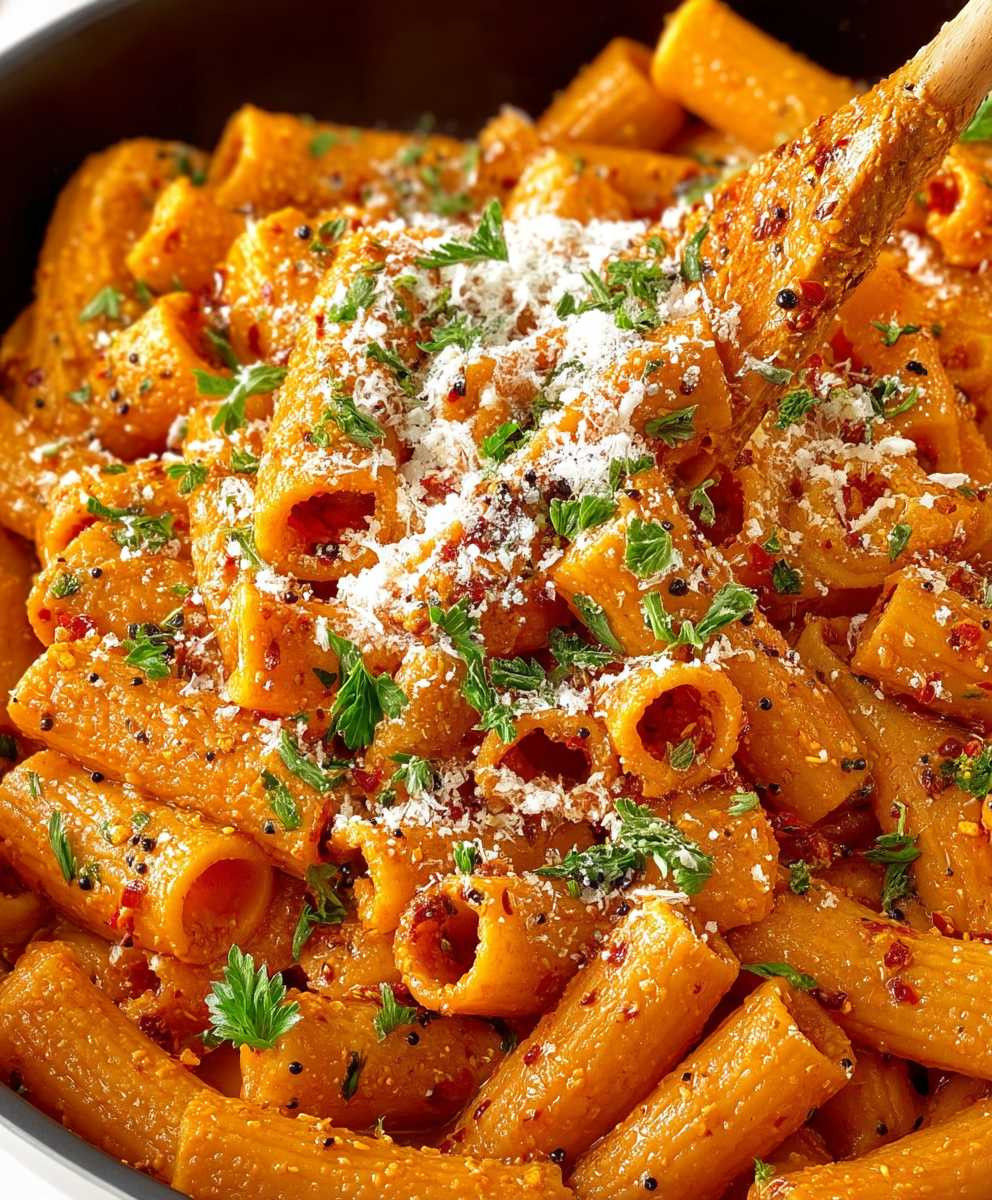
Conclusion:
This isn’t just another pasta recipe; it’s a flavor explosion waiting to happen! The vibrant heat of the Calabrian chili, perfectly balanced with the richness of the sauce and the satisfying chew of the pasta, makes this Calabrian chili pasta an absolute must-try. Trust me, once you experience the depth of flavor, you’ll be adding this to your regular rotation. It’s quick enough for a weeknight meal but impressive enough to serve to guests.
But the best part? It’s incredibly versatile! While I love it served simply with a sprinkle of fresh parsley and a generous grating of Parmesan cheese, the possibilities are truly endless. For a heartier meal, consider adding grilled shrimp or chicken. The smoky char complements the chili beautifully. If you’re a vegetarian, roasted vegetables like bell peppers, zucchini, and eggplant would be fantastic additions. Their sweetness will provide a lovely counterpoint to the spice.
And speaking of spice, feel free to adjust the amount of Calabrian chili to your liking. If you’re sensitive to heat, start with a smaller amount and taste as you go. If you’re a chili head like me, don’t be afraid to add an extra pinch (or two!). You can also experiment with different types of pasta. While I’ve specified spaghetti in the recipe, penne, rigatoni, or even orecchiette would work wonderfully. The key is to choose a shape that can hold the sauce well.
For a truly decadent experience, try adding a dollop of mascarpone cheese to each serving just before serving. The creamy richness will melt into the sauce, creating an unbelievably luxurious texture. Another variation I enjoy is adding a squeeze of fresh lemon juice at the end. The acidity brightens up the flavors and adds a refreshing zing.
Don’t be intimidated by the “Calabrian chili” part. While it might sound fancy, Calabrian chili paste or peppers are becoming increasingly available in grocery stores and online. And once you have them, you’ll find yourself using them in everything! They add a unique depth of flavor that’s unlike any other chili.
I’m so excited for you to try this recipe! I truly believe it’s a winner. It’s simple, flavorful, and endlessly adaptable. It’s a dish that’s sure to impress, whether you’re cooking for yourself or for a crowd.
So, what are you waiting for? Gather your ingredients, put on some music, and get cooking! I promise you won’t regret it. And when you do make it, please, please, please come back and let me know what you think! I’d love to hear about your experience and any variations you try. Share your photos, your tips, and your stories. Let’s build a community of Calabrian chili pasta lovers! I can’t wait to see what you create. Happy cooking!
Calabrian Chili Pasta: A Spicy & Delicious Recipe
Spicy and flavorful Calabrian chili pasta with garlic, Pecorino Romano, and Parmesan cheese. A quick and easy weeknight meal with a creamy, emulsified sauce.
Ingredients
- 1 pound pasta (spaghetti, linguine, or bucatini recommended)
- 1/4 cup extra virgin olive oil
- 4 cloves garlic, thinly sliced
- 2-4 Calabrian chili peppers, finely chopped (or 1-2 teaspoons Calabrian chili paste, adjust to taste)
- 1/2 teaspoon red pepper flakes (optional, for extra heat)
- 1/4 cup dry white wine (optional)
- 1/2 cup pasta water, reserved
- 1/4 cup grated Pecorino Romano cheese, plus more for serving
- 1/4 cup grated Parmesan cheese, plus more for serving
- 2 tablespoons butter
- Salt and freshly ground black pepper to taste
- Fresh parsley, chopped (for garnish)
Instructions
- Get your pasta water boiling! Fill a large pot with salted water and bring it to a rolling boil. Add pasta and cook according to package directions, subtracting 1-2 minutes for al dente. Reserve 1/2 cup pasta water before draining.
- Start the aromatic base. While the water is heating, pour the olive oil into a large skillet or Dutch oven over medium heat. Add the thinly sliced garlic and cook, stirring frequently, until it’s fragrant and lightly golden (2-3 minutes). Be careful not to burn the garlic.
- Add the Calabrian chili. Add the chopped Calabrian chili peppers (or chili paste) and red pepper flakes (if using) to the skillet. Cook for another minute, stirring constantly, to infuse the oil with the chili’s flavor and heat.
- Deglaze with white wine (optional). If you’re using white wine, pour it into the skillet and scrape up any browned bits from the bottom of the pan. Let the wine simmer for a minute or two, until it’s mostly evaporated.
- Season with salt and pepper. Season the sauce with salt and freshly ground black pepper to taste.
- Drain the pasta. Drain the pasta in a colander, but don’t rinse it!
- Add the pasta to the sauce. Immediately add the drained pasta to the skillet with the sauce. Toss to coat the pasta evenly with the sauce.
- Add pasta water and cheese. Add a splash of the reserved pasta water to the skillet, along with the grated Pecorino Romano and Parmesan cheeses. Toss continuously, adding more pasta water as needed, until the sauce becomes creamy and coats the pasta beautifully.
- Incorporate the butter. Add the butter to the skillet and toss until it’s melted and incorporated into the sauce.
- Adjust seasoning. Taste the pasta and adjust the seasoning as needed. Add more salt, pepper, or Calabrian chili if desired.
- Serve immediately. Serve the pasta immediately in bowls, garnished with fresh parsley and extra grated Pecorino Romano and Parmesan cheese. A drizzle of extra virgin olive oil is also a nice touch.
Notes
- Adjust the spice level to your preference.
- Use any pasta shape you like.
- Add vegetables or protein for extra flavor and nutrients.
- A little lemon zest adds a bright, citrusy note to the dish.
- In addition to parsley, you can also use other fresh herbs like basil, oregano, or thyme to garnish the dish.
- While this dish is best served immediately, you can prepare the sauce ahead of time and store it in the refrigerator for up to 3 days. When you’re ready to serve, simply cook the pasta and toss it with the sauce.
- Don’t Overcook the Pasta: This is crucial for achieving the perfect texture. Overcooked pasta will be mushy and won’t hold the sauce well. Aim for al dente!
- Emulsifying the Sauce: The key to a creamy, emulsified sauce is the pasta water. Don’t be afraid to add more pasta water as needed to achieve the desired consistency. The starch in the water helps to bind the sauce and cheese together, creating a luscious texture.

